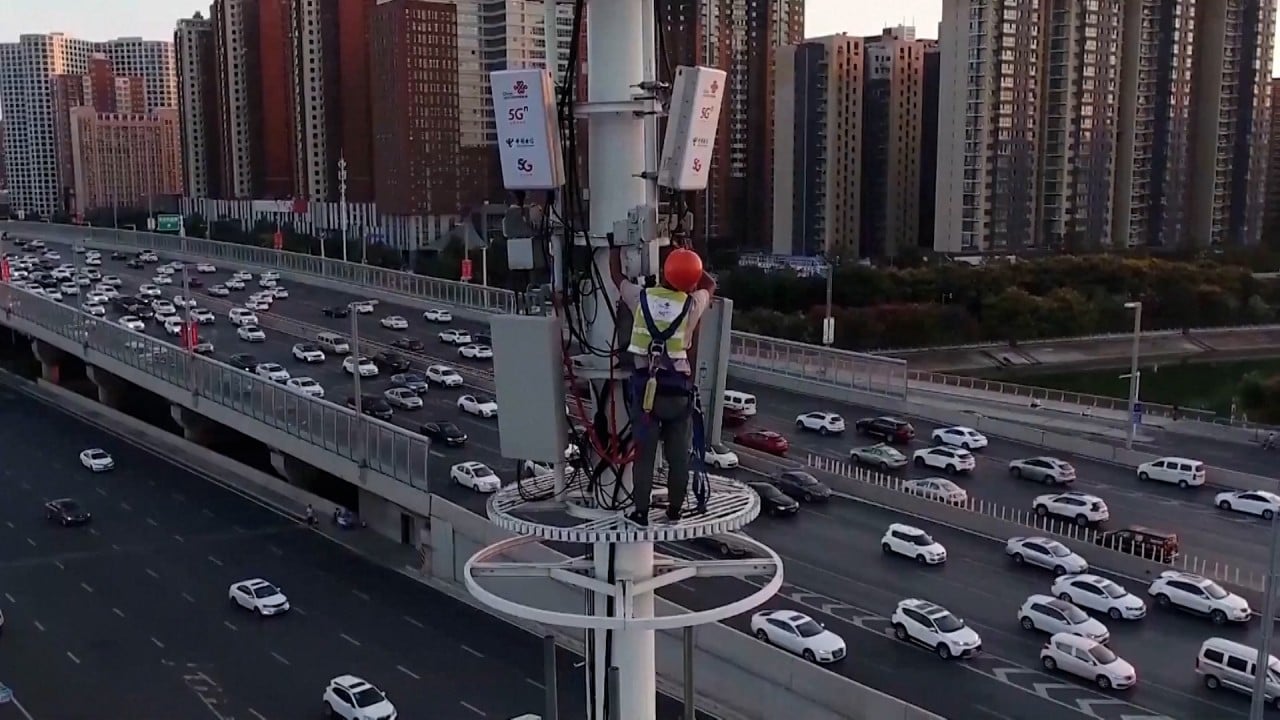
EVs, 5G set to spearhead China’s ‘moderately excessive’ infrastructure push amid economic slowdown concerns
- China is likely to place an emphasis on new infrastructure – such as new energy, charging stations for electric cars, data centers, 5G
- Economists are worried about China’s economic slowdown with fourth quarter growth likely to fall below 4 per cent from 4.9 per cent in the third quarter
Beijing’s call for “moderately excessive development of infrastructure” may reflect its growing concerns over an economic slowdown, but it is unlikely to repeat the previous mistakes of debt-fuelled blind expansion of traditional projects, analysts said.
Debate over stimulus tools was triggered as the People’s Bank of China marginally loosened mortgage and development loans for qualified developers from October, while the central banks also deleted wording like “controlling the valve on money supply” in its monetary policy report last week.
He’s not talking about policies for the next three or five months, but a rather long-term guideline
Chinese policymakers will convene the annual central economic work conference next month to discuss the slowdown, as well as the impact of the coronavirus and external changes, setting the tone for the economic tasks for next year.
“He’s not talking about policies for the next three or five months, but a rather long-term guideline,” said Larry Hu, chief China economist of Macquarie Capital, referring to Liu’s explanation of the decisions made during the recently concluded sixth plenum.
Guangdong to build 20 hi-tech industrial estates focusing on 5G by 2022
Such projects often include new energy, 5G, ultra-high voltage power transmission, artificial intelligence, industrial internet, data centers and educational and medical care facilities.
Added government focus on new infrastructure projects will certainly help improve fixed-asset investment after growth slowed to 6.3 per cent in the first 10 months of the year from 34.2 per cent in the first quarter.
New infrastructure investment reached only 1 trillion yuan (US$157 billion) last year, 1.9 per cent of overall national fixed-asset investment, or 7 per cent of property investment, while the combined size over the next five years is estimated at 10 trillion yuan, according to research by the Industrial and Commercial Bank of China in June.
There is room for green infrastructure, such as new energy projects, and manufacturing investment to catch up, so that they can partly offset the decline of the property market
“The construction of new infrastructure is not set to serve the purpose of economic stabilisation, but mainly optimisation of economic structure,” Hu said.
“It’s time to do something,” he said on Wednesday. “The simplest and most effective way is still new infrastructure construction.”
New projects, particularly concerning new energy and the digital economy, will become a main tool for cross-cyclical adjustment and credit support, replacing the previous obsession with property development, traditional infrastructure and heavy industry, Ren added.

Morgan Stanley, which takes a more optimistic tone than others, believes that China’s deleveraging policy is close to a turning point, while macroeconomic policies will turn more proactive and accommodative ahead of the 20th Party Congress in October next year.
“We believe that China has the spare capacity to accelerate infrastructure construction,” Robin Xing, Morgan Stanley’s chief China economist, said on Tuesday.
“There is room for green infrastructure, such as new energy projects, and manufacturing investment to catch up, so that they can partly offset the decline of the property market.”
For a decade, China borrowed to build infrastructure. Is economy now at risk?
Infrastructure investment grew by 1 per cent from a year earlier in January-October period, compared to 4.2 per cent in the same period of the pre-pandemic year of 2019, and 19.6 per cent in 2017.
Project approvals, a leading indicator for fixed-asset investment, has shown no sign of a significant increase.
The National Development and Reform Commission, the country’s top economic planner, approved 70 projects in the first 10 months of the year, involving a total planned investment of 495.4 billion yuan (US$77.5 billion).
Only four, with a combined planned investment of 15 billion yuan, were approved in October, government data showed, up from 10.6 billion yuan for four projects a year earlier.


